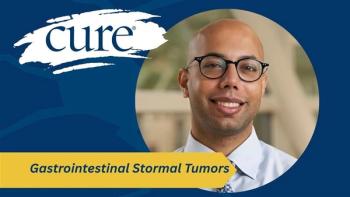
Does Your Body’s Biological Clock Affect Your Treatment?
How your body's biological clock could affect the success of cancer treatment.
How many times have you heard “timing is everything?”
This age-old adage has become the mantra of a few medical cancer specialists as they deliver a treatment modality that is anything but traditional. They practice chronomodulated chemotherapy—infusing chemotherapy at very specific times—with the hope of reducing toxicity and improving survival. The approach is less damaging to healthy tissue while enabling larger doses to be delivered more frequently, with higher efficacy.
“What we are doing is infusing drugs at the time of day that cancerous cells are most actively dividing, thus most vulnerable to the cytotoxic effect; and when healthy cells are at rest, thus the least sensitive to toxic impact," says Keith Block, MD, medical director and co-founder of the Block Center for Integrative Cancer Treatment in Evanston, Illinois. He’s been offering chronotherapy to his patients since the mid ‘90s.
The concept that the biology of cancer cells is time-sensitive in humans was proposed decades ago by William Hrushesky, MD, while he was doing research at the University of Minnesota.
“In the 1970s, I was at the National Institutes of Health working in small cell lung cancer, doing tremendous damage with high doses of chemotherapy, and I read a paper showing that with the main drug used to this day for leukemia, timing made a difference between cure or no cure in mice,” says Hrushesky.
The timing discovery and deep concern about side effects led him into the pioneering work and finding that the biology of cancer cells depends on time-sensitive circadian rhythms. This was the groundwork used by clinical investigators to examine how timing chemo administration worked, with what drugs, and which cancers. Since that time, the journal Nature Reviews Cancer published data in 2009 that found more than 30 cancer drugs have been reported to vary by 50 percent in toxicity and efficacy, depending on time of administration. The basis for this phenomenon is unclear, but may be related to circadian control of metabolism and cell growth and the fact that cells are more sensitive to chemotherapy during periods of active metabolism and cell division.
There especially appears to be promise with some of the toughest cases, including advanced or recurring diseases and cases where other treatments have failed.
In a recent study, metastatic colon cancer was controlled with minimal side effects administering cetuximab via chronotherapy, despite failure of several previous treatment regimens in those patients. A separate study, published in 2009 in Cancer, focused on subjects with metastatic colon cancers that had spread to the liver and had not responded to chemotherapy delivered conventionally. The study showed more patients had partial responses or stable disease with chronotherapy, and fewer incidences of severe side effects.
“Not only have four times more patients with advanced cancers reached the five-year survival mark using chronotherapy, but studies reported in multiple peer reviewed journals show up to 50 percent of subjects responded favorably, including those who previously had poor responses or severe reactions to conventional administration,” says Block, who references a study that shows five-year survival of ovarian cancer patients increased from 11 percent to 44 percent, depending on when they received cisplatin and doxorubicin. Block’s chronotherapy patients wear a programmable, portable pump enabling them to receive infusions virtually anywhere, day or night—at the time research has demonstrated is optimal for that specific treatment.
The center’s outcomes compare to the statistics reported in many of the medical journals. “We've been able to take 40 to 50 percent of our patients who were previously unable to tolerate chemotherapy administered conventionally, and, using the same exact treatment regimen, administer the drugs via chronomodulation and had them respond extremely well,” says Block.
Since the original work linking the body’s clocks to timing of drugs, over 50,000 references have appeared in the National Institute of Health’s archive of biomedical and life sciences journals about chronobiology. Yet, the technology is rarely applied in the United States, though it is more widespread in Europe and other parts of the world.
The issues are convenience, time, and expense say the few investigators and medical doctors who study and endorse chronotherapy in the United States.
“Currently, cancer treatment in our country is scheduled at the convenience of the medical care provider—not at the optimal time for the patient. There are expenses tied to training on the technology as well as to overhead and learning to chronomodulate new drugs,” says Block. Insurance does not cover his extra cost, but he has made the investment based on the promising patient outcomes he sees.
Hrushesky, who recently retired from years in public service, is focusing his research on bringing chronotherapy to mainstream medicine. And he is building on his findings in both circadian rhythms and other biological rhythms, showing that timing a woman’s primary breast cancer surgery according to her fertility cycle can dramatically affect outcome.
“It was proven six decades ago in mice and three decades ago in humans that cancer cells follow the rules of circadian and other biological rhythms, and that this has strong implications for disease prevention and treatment,” says Hrushesky.





